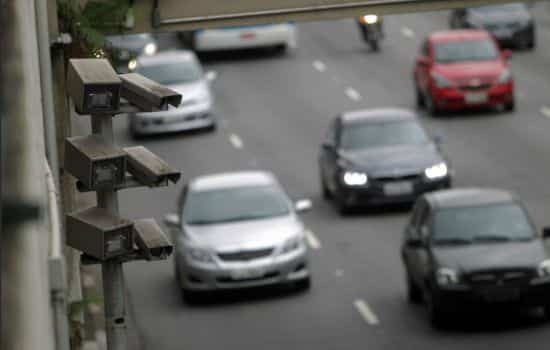In the modern world of mobile technology, few applications have been able to detect speed cameras as well as Waze.
This innovative GPS navigation platform not only provides accurate directions but has become an indispensable tool for millions of drivers looking to avoid traffic jams, detect speed cameras, and optimize their daily routes. Initially developed in Israel and later acquired by Google in 2013, Waze represents a perfect example of how collaborative technology can significantly improve road safety and urban transportation efficiency.
The value proposition of Waze lies in its unique community approach, where users themselves become the eyes and ears of the network.
Unlike traditional navigation systems that rely solely on static map data, this app uses real-time information generated by its community of drivers to provide the most up-to-date and accurate navigation experience available on the market today.
Waze Operation and Main Features
The Waze system operates using a sophisticated algorithm that combines data from multiple sources to create a dynamic, constantly updated map. The app collects traffic information from users' mobile phones, analyzing travel speed, braking patterns, and other indicators that reveal the actual condition of the roads.
One of the features most valued by users is speed camera detection and alerts. The system allows drivers to report the location of fixed and mobile speed cameras, creating a collaborative database that benefits the entire community. When a user approaches a previously reported speed camera, the app issues an audible and visual alert, allowing the driver to adjust their speed and avoid potential fines.
The Waze user interface is designed to be intuitive and easy to use while driving. The main map displays the recommended route in vivid colors, with distinctive icons indicating different types of alerts: speed cameras, accidents, roadwork, stopped vehicles on the shoulder, and other obstacles that may affect traffic flow.
Benefits for Drivers and the Community
The benefits of using Waze extend far beyond simple navigation. The app has proven to be a valuable tool for improving road safety and reducing travel times in congested urban areas.
Real-time route optimizationWaze's algorithm constantly analyzes traffic conditions and suggests alternative routes when it detects congestion. This dynamic adaptation capability can significantly reduce travel times, especially during rush hour.
Preventing traffic finesThe speed camera detection feature has helped millions of drivers avoid speeding tickets. By receiving timely alerts about the location of speed cameras, users can adjust their driving and maintain safe and legal speeds.
Fuel price informationWaze also provides up-to-date data on gas prices at nearby gas stations, allowing drivers to make informed decisions about where to refuel and save money.
Integration with other servicesThe app integrates seamlessly with music platforms like Spotify and calendar services, creating a more comprehensive and personalized driving experience.
Technical Aspects and Operation of the System
Waze's technical architecture It represents an impressive achievement in the field of real-time data processing and artificial intelligence applied to transportation. The system processes millions of data points every second, analyzing traffic patterns, average speeds, and user reports to generate accurate route recommendations.
The routing algorithm uses advanced machine learning techniques to predict future traffic conditions based on historical data and seasonal patterns. For example, the system can anticipate that a certain road will experience congestion during peak hours on a specific weekday and adjust its recommendations accordingly.
High-precision geolocation is fundamental to Waze's operation. The app uses GPS signals, cell phone towers, and Wi-Fi access points to determine the user's exact location with minimal error. This precision is essential for providing timely alerts about speed cameras and other road features.
The collaborative reporting system implements verification mechanisms to ensure the accuracy of the information. When multiple users report the same incident or confirm the presence of a radar, the reliability of that information in the system's database increases significantly.
Impact on Traffic Authorities and Legal Considerations
Waze's popularity has sparked an interesting debate about its impact on law enforcement and traffic operations. Some police departments have expressed concerns about how the app could affect their speed enforcement and traffic safety efforts.
However, several studies have shown that using Waze can contribute positively to road safety by:
Promote compliance with speed limitsBy alerting drivers to the presence of speed cameras, the app encourages drivers to maintain legal speeds, not only at specific camera locations but also in general.
Reduce traffic congestionBy distributing traffic flow through alternative routes, Waze helps reduce congestion on major arteries, which can lower the risk of accidents related to slow-moving traffic.
Facilitate emergency responses: Real-time accident and obstacle reporting can help emergency services respond more quickly to incidents.
Comparison with Other Navigation Apps
In the competitive navigation app market, Waze stands out for its community focus and its specialization in speed camera detection and traffic alerts. While apps like Google Maps offer similar features, Waze maintains specific advantages:
- Greater accuracy in radar alerts: Due to its active user base and specialized in reporting traffic incidents
- More frequent updates: Traffic data is updated every few seconds, providing more accurate information
- Interface optimized for driving: The design is specifically intended to minimize distractions while driving
- More engaged community: Waze users tend to be more active in reporting incidents and keeping information up to date.
See Also:
- Master the violin with ease using an interactive learning app
- Discover the value of your vehicle
- Glucose monitoring: control of your health at your fingertips
- Optimize your cell phone and give it a new digital life
- Redecorate your home with a professional touch
Technological Development and Future of Waze
The future of Waze looks bright, with continued developments in artificial intelligence and machine learning that promise to make the app even more accurate and useful. Engineers are working on advanced features such as:
Improved traffic prediction: Using more sophisticated algorithms to anticipate congestion patterns with greater temporal accuracy.
Integration with connected vehicles: Collaboration with automakers to integrate Waze directly into vehicle infotainment systems.
Enhanced security alerts: Development of new alert categories that include adverse weather conditions, temporary construction zones, and other factors that affect road safety.
Energy optimization: Features that help electric vehicle drivers plan routes that include charging stations and optimize battery consumption.
Data Privacy and Security Considerations
As with any app that uses location data, Waze must carefully manage privacy and security concerns. The company has implemented several measures to protect user information:
Location data is anonymized before being used to generate traffic information, and the app allows users to control what information they share with the community. Furthermore, Waze complies with international data protection regulations, including the European GDPR.
Conclusion
Waze has proven to be much more than just a navigation app; it's a revolutionary platform that has transformed the way drivers interact with the roads and each other. Its innovative approach to community collaboration and real-time information has set a new standard for transportation apps, benefiting both individual drivers and urban communities at large.
The ability to Waze Its ability to detect and alert about speed cameras, combined with its intelligent navigation system and route optimization features, makes it an indispensable tool for millions of drivers around the world. Its positive impact on road safety, traffic efficiency, and the overall driving experience is undeniable.
As technology continues to evolve, we can expect that Waze continue to innovate and improve, incorporating new features and capabilities that will make driving safer, more efficient, and more enjoyable. The app represents a perfect example of how collaborative technology can effectively solve real-world problems, creating value for both individual users and society as a whole.
In a future where autonomous vehicles and smart cities become a reality, the lessons learned from the success of Waze will be essential to the development of more integrated and efficient transportation systems. His legacy as a pioneer in collaborative navigation and radar detection will continue to influence the development of transportation technologies for years to come.







